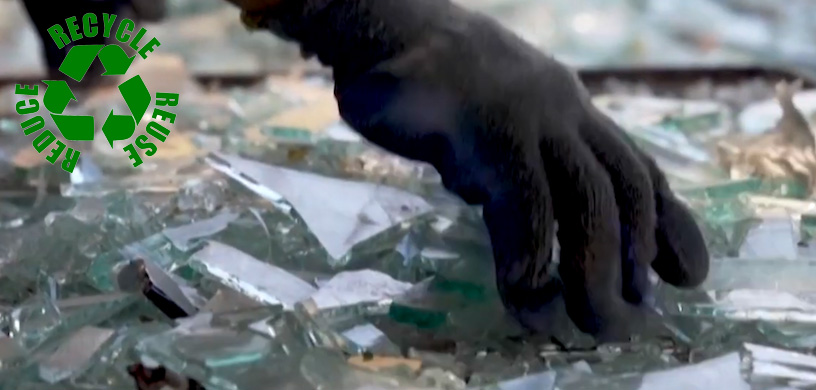Posted on : 06-11-2020 Author : Viraat Didwania
Glass is fully recyclable and one can recycle it infinitely without losing the purity or quality. Environment, glass users, and manufacturers benefit from recycling. Glass takes thousands of years to break down in a landfill due to which recycling benefits the environment.
For manufacturers, it results in less emissions as well as raw materials usage, saves energy, and boosts the lifespan of equipment such as furnaces. Recycled glass is always in high demand, as quality recycled pieces can easily fulfill the demand of new glass products.
Glass is made from the available raw materials, such as sand, limestone, soda ash, and cullet - the technical term for furnace-ready recycled glass. Also known as glass reprocessing, glass recycling involves turning waste glass into usable glass. It involves cleaning, crushing, and melting used glass prior to molding it into bottles and jars. The recycled glass is used in two ways namely, as a substitute for sand in concrete and making new glass products such as bottles and jars.
The Recycling Process
Following are the steps of recycling waste glass:
- Gathering: Different glass items are found in the heaps of waste and recycle bins after been used. These waste glass items are collected via a nation-wide grid of waste collectors, recycling firms, and rag pickers.They are then sent to the nearby sorting facility where they are further processed.
- Sorting:It is a fact that glasses are of different colors. Thus, the waste glass items are sorted as per the color for boosting recycling efficiency.
- Making Cullets: The waste is now transformed into small pieces called cullets via crushing and grinding in a crushing machine. Cullets of varying sizes are produced.
- Removing Contaminants:All glass waste items contain different contaminants. If these are not removed, the quality of recycled glass will not be good; it would have structural defects. The sorted waste is then screened for removing contaminants such as metal lids, stickers, aluminum, plastic, and corks.Magnets are used to pull metallic contaminants, while the ceramic ones are made to pass via different screens or filters. Plastic ones are picked up manually, while laser is used to remove other contaminants.
- Dyeing: Glass cullet are now de-colored and dyed to match the intended color for the final new glassproduct. Herein, the melted glass cullets are oxidized. For green glass, the deep dark green color of cullets are converted to yellow-green color and manganese oxide is mixed to make cullets turn grey. To this grey base, other coloring dyes are added to get glass of different colors. Similarly, zinc oxide is added to brown or amber glass being recycled to obtain blue or green cullets. For getting clear glass cullets, manganese oxide and erbium oxide are added to the cullets.
- Making New Glasses or Sand Substitute: The clear or colored cullets are now sent to the glass factory, where they are mixed with the raw materials such as sand to make glass. The mix is the melted in a furnace at a temperature of 1500 degrees Fahrenheit. This melted glass is then mechanically blown or molded into new shapes such as those of containers, sheets, and bottles. A small proportion of recycled glass pieces or culletsis also used to substitute sand for making polymer concrete, a widely usedraw material in the construction industry.Mined sand, a primary component of concrete, needs washing and grading prior to becoming a part of themix of aggregate, water, and cement for making concrete. Substituting sand with recycled glass or cullets makes the polymer concrete tougher.
Not All Waste Glasses Are Recyclable!
Glasses of windows, light bulbs, microwave oven ware, crystal, mirrors and Cathode ray tube (CRT- used in old TVs) are not used for recycling. This is because they can result in defective containers. These types of glass have a different melting temperature and product specific chemical composition make them incompatible for recycling with ordinary glass.
